Most important is the experience of Cuba. Wherever you end up, here are five ways to immerse yourself in its thriving culture.
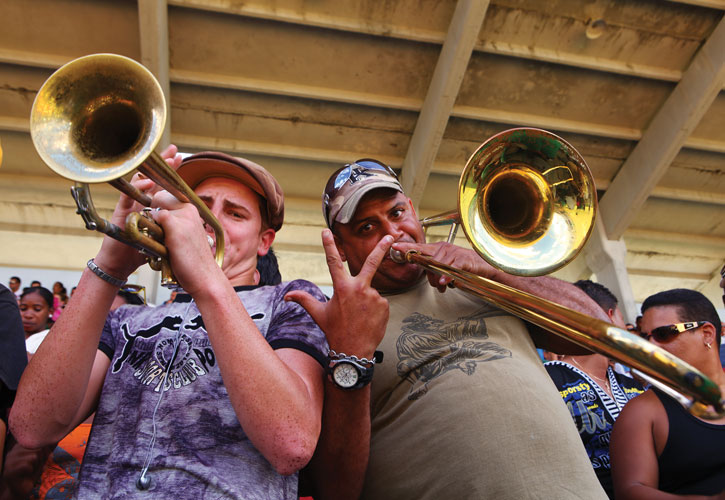
Musicians in Cuba. Photo © Christopher P. Baker.
Music and dance form the pulsing undercurrent of Cuban life. Havana’s streets are literally full of Afro-Caribbean music. The city hosts dozens of venues for sizzling salsa as well, plus a hot jazz scene and the spectacle of the Hotel Nacional’s Cabaret Parisien. Don’t miss a bite to eat at the Tablao de Pancho, which hosts a dinner show with old-time crooners belting out songs from Buena Vista Social Club.
The city of Santiago de Cuba, founded in 1514, is the second largest city in Cuba and the capital city of Santiago de Cuba Province. It’s said Son, Cuba’s quintessential sound, was birthed here. You can hear traditional Cuban music at its best at Santiago’s Casa de la Trova.
Colonial-era Matanzas, the city for which the province is named, is a center for Afro-Cuban music and dance and perfect if you’d like to spend your days on the beach.
Cuba boasts glorious beaches. Most are scattered along the north shore, with concentrations immediately east of Havana, in the Matanzas Province city of Varadero, on Cayo Largo, on the Jardines del Rey (Ciego de Ávila and Camagüey Provinces), and in Holguín.
Playa Sirena is the best beach of Cayo Largo, a small key at the southeastern end of Cuba’s Canarreos archipelago. Reached by a sandy unpaved road, this stunning beach borders turquoise waters that must be seen to be believed, but be cautious: the waters shelve deeply and are not safe for children.
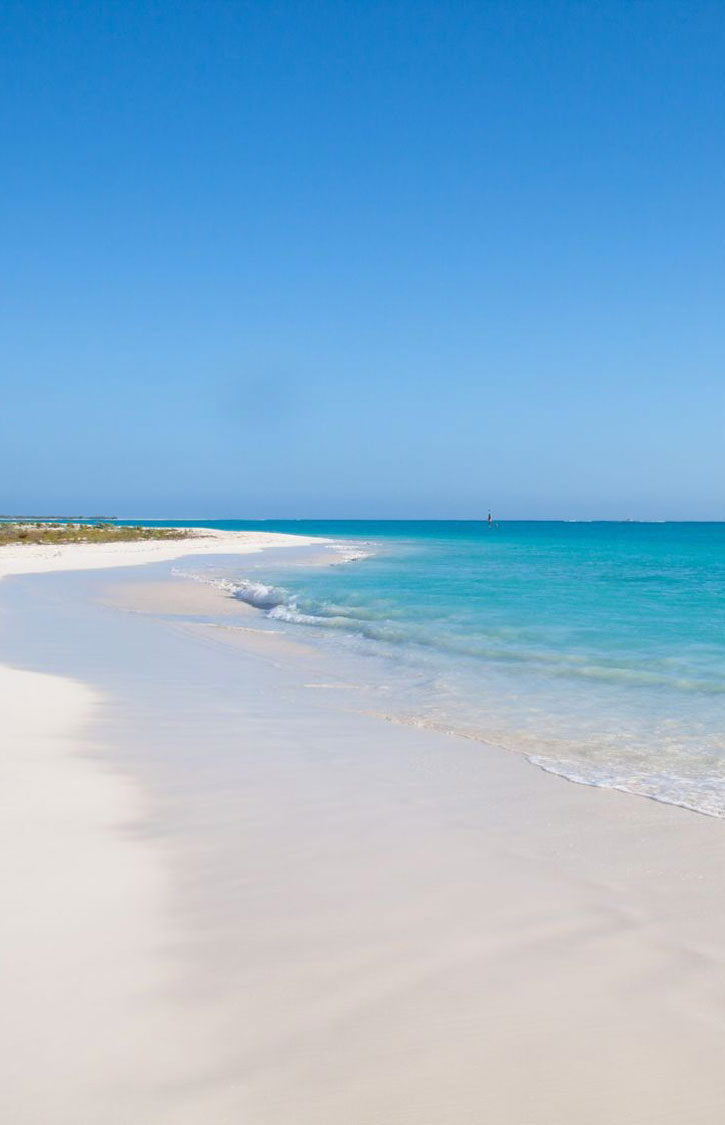
Playa Paraiso in Cayo Largo. Photo © Cristian Santinon/123rf.
The city of Varadero in Matanzas Province is Cuba’s premier beach resort. Occupying the slender 20-kilometer-long Península de Hicacos, there’s no shortage of sun and sand, plus the scuba diving is excellent and there are fun boat excursions too.
Slung beneath Cuba, the Isla de la Juventud archipelago draws few visitors, though it is home to some of the finest diving spots in the Caribbean. The exception is Cayo Largo, accessible from mainland Cuba—a coral jewel with stupendous beaches well worth a visit.
Cuba is a visual delight, and anyone who enjoys driving will love the opportunity to tour its scenery in a rented classic automobile. Always keep in mind when road tripping in Cuba: When traveling east-west or vice versa, take your pick of the super-fast Autopista, which skips all towns and runs through flat agricultural lands, or the winding Carretera Central, which runs north of and parallel to the Autopista. Outside these two routes, the crisscrossing maze of rural backroads can be an exciting challenge.
The small town of Viñales in Pinar del Río Province is an excellent road trip goal, with two very different routes from Havana; take both for the full round trip experience. The Autopista is surprisingly scenic, most notably in the east where the lowlands are smothered in oceans of sugarcane, and has relatively little traffic. The only gas station is at the turnoff for Soroa, with its lovely orchid garden.
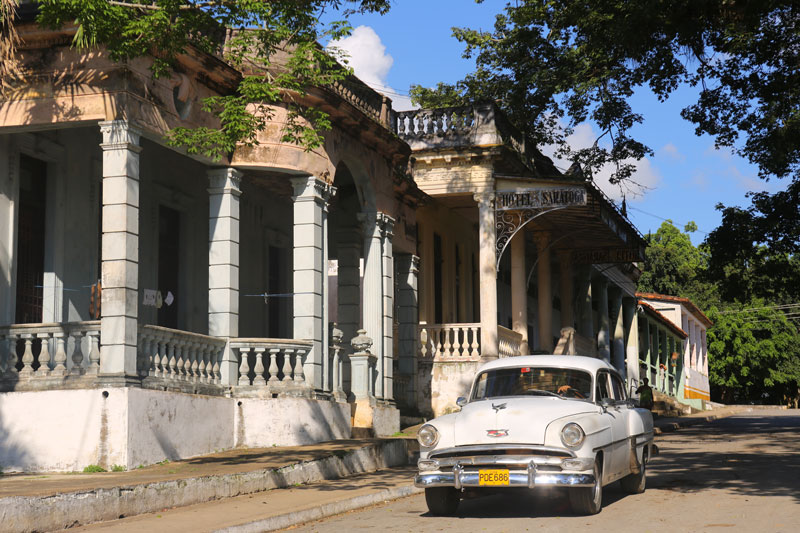
A classic Chevy on the streets of San Diego de los Banos in Pinar del Río province. Photo © Christopher P. Baker.
An alternate route between Viñales and Havana is the Carretera Central which passes through sleepy provincial towns such as Candelaria, Santa Cruz de los Pinos, and Consolación del Sur—towns memorable for their old churches, faded pastel houses, and covered walkways with neoclassical pillars. The two-lane highway parallels the Autopista along the southern edge of the mountains and grants easy access to Soroa and Parque Nacional La Güira.
In Ciego de Avila Province, the route from Chambas to Caibarién in Villa Clara Province via Circuito Norte offers pure Cuban rural scenery: tobacco fields tended by ox-drawn plows and shaded by royal palms, with rustic bohíos in the lee of mountains.
For avid outdoor adventurers and mellow bird-watchers both, Cuba is a wealth of possibility. In Artemisa Province, the eco-resort of La Terrazas lies within Reserva de la Biosfera Sierra del Rosario, Cuba’s first biosphere reserve. The trill of Cuban green woodpeckers and the haunting song of the endemic Cuban solitaire accompany you on the trails, and the Cuban trogon, or tocororó, is commonly seen near the Cafetal Buenavista.
Bird-watchers and hikers are equally enamored of Sierra del Escambray, a mountain range spanning the provinces of Sancti Spíritus, Cienfuegos and Villa Clara where forest trails lead to waterfalls. A challenging route for cyclists connects Santa Clara with Trinidad via Topes de Collantes.
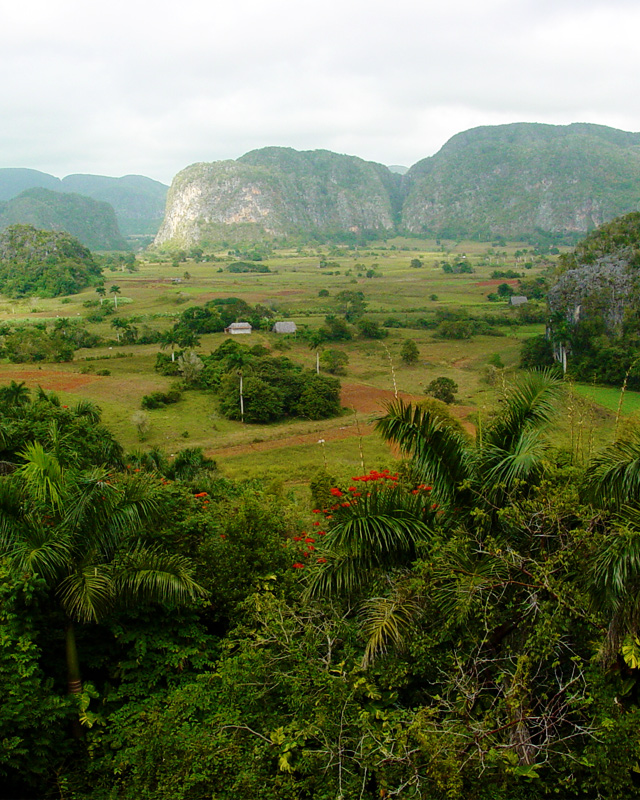
Viñales. Photo © Adam Jones, Ph.D. – Global Photo Archive, licensed Creative Commons Attribution & ShareAlike.
Viñales in Pinar del Río Province makes an appearance again here, with its magnificent scenery, preeminent climbing, and caving. Scuba divers rave about Cayo Levisa and María la Gorda.
In Sierra Maestra, a mountain range which sits near the border of Granma and Santiago de Cuba provinces, hikers with a mind for history can follow revolutionary trails trod by Fidel Castro and Che Guevara. You can hike to Castro’s headquarters, La Comandancia de la Plata, and to the summit of Pico Turquino, Cuba’s highest peak.
From history-packed Holguín’s intriguing plazas to Havana’s colonial core full of plazas, cathedrals, and museums, Cuba’s past is as lively as its people. Habana Vieja (Old Havana) is a living museum inhabited by 60,000 people and containing perhaps the finest collection of Spanish-colonial buildings in all the Americas. You can follow Ernest Hemingway’s ghost down cobbled streets and through squares embraced by the former palaces of Cuba’s ruling gentry, or dine at one of the restaurants popular with Papa and his friends.
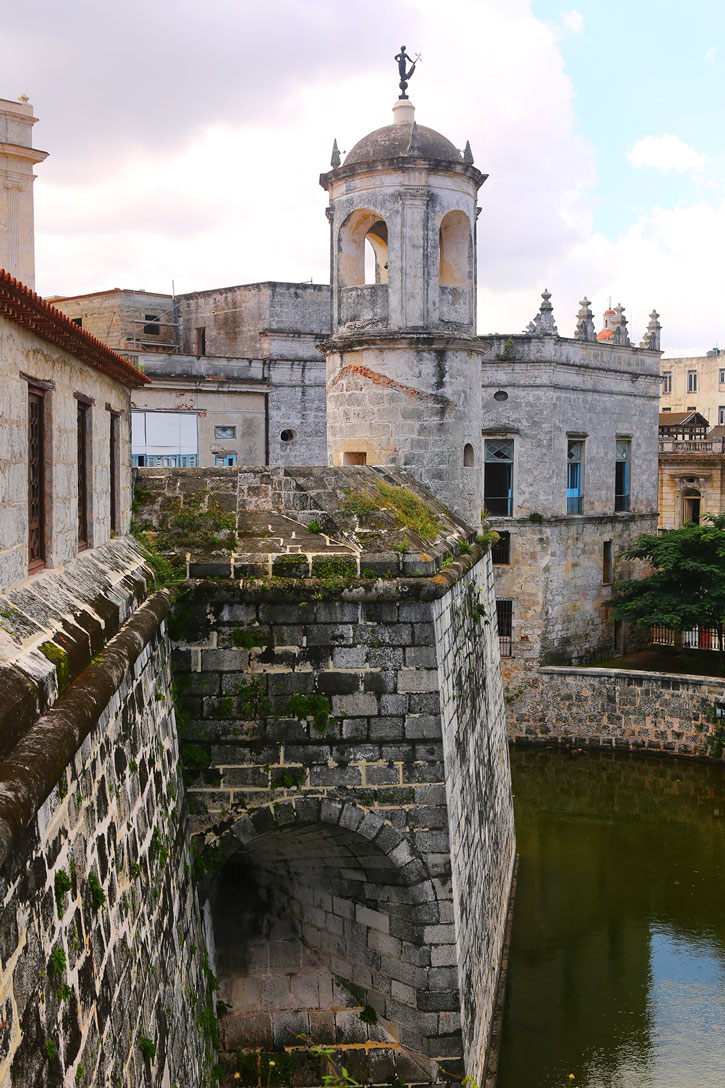
Castillo de la Real Fuerza in Plaza de Armas, Havana. Photo © Christopher P. Baker.
Parque Histórico Militar Morro-Cabaña, on the northeastern side of the harbor overlooking Habana Vieja, is the largest preserved fortress in the Americas and one of the city’s more impressive but lesser visited sights. A squad attired in 19th-century uniforms continues to perform the Ceremonia del Cañonazo (cannon-firing ceremony) at 9pm every evening.
Baracoa in Guantánamo Province is the oldest town in the Americas and retains a distinct culture that owes much to its pre-Columbian Taíno history. For an immersion in Taíno culture, head to the Museo Arqueológico Cueva del Paraíso, with pre-Columbian skeletons in situ. Predating Havana, the city of Santiago de Cuba is infused with Haitian and Jamaican influences, and holds preserved historical treasures.
Villa Clara Province is home to Santa Clara, which draws visitors to the mausoleum and museum of Che Guevara, Mausoleo Che Guevara. While the bronze 22-foot statue of Che is impressive, the tour of his possessions and the photographic chronicle of his life are far more engaging.